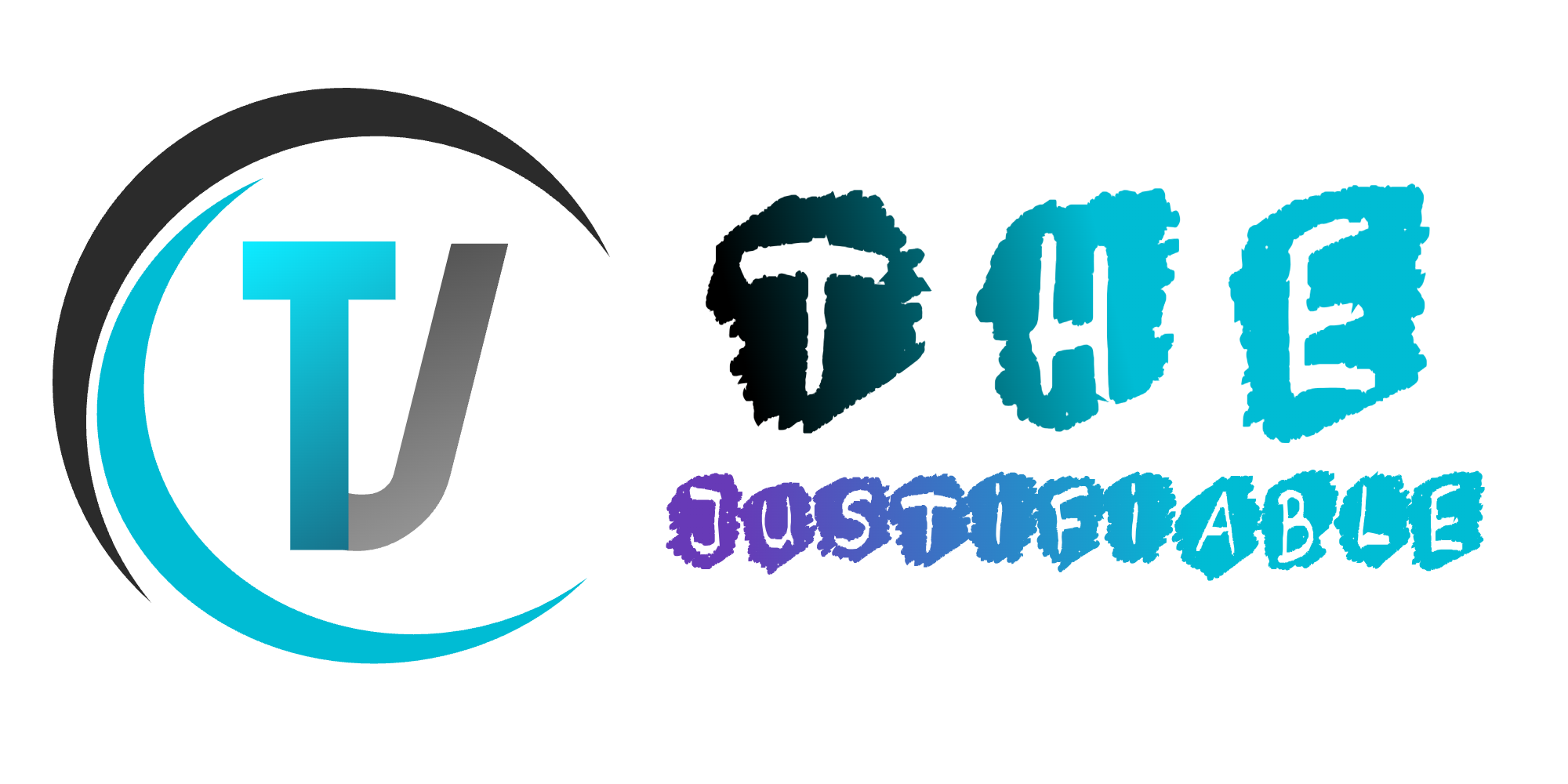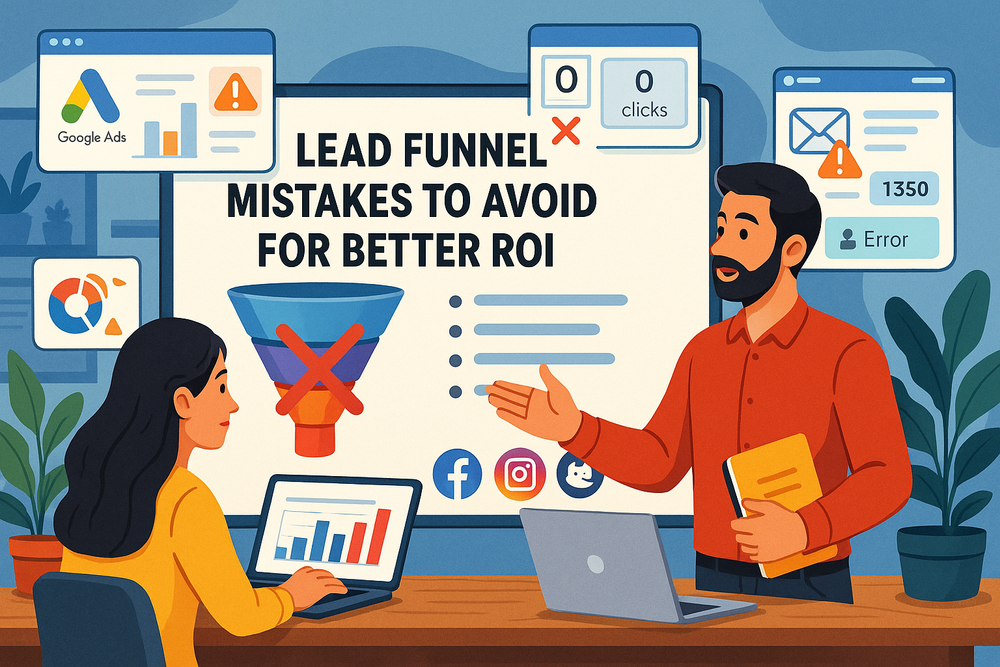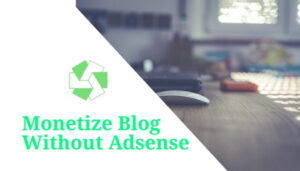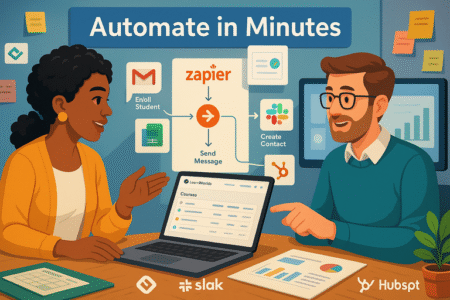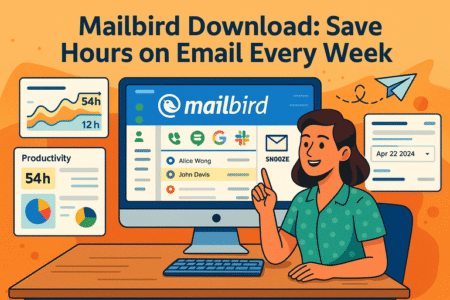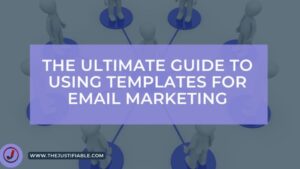Table of Contents
Is your lead funnel quietly sabotaging your marketing efforts? Are you pouring time and money into campaigns but not seeing the ROI you expected? Do leads drop off without explanation, or worse—never convert at all?
If any of that sounds familiar, you’re not alone. A lead funnel is supposed to guide people from curious visitor to loyal customer, but too many funnels get tripped up by avoidable mistakes. In this guide, we’re going to walk through the most common lead funnel missteps that can kill your conversions—and what to do instead.
Whether you’re building your first funnel or trying to fix one that’s underperforming, you’ll find clear answers, simple fixes, and strategies that actually work. Let’s dive in.
1. Overlooking the True Purpose of a Lead Funnel
Before optimizing anything, you need to clearly understand why your lead funnel exists.
At its core, a lead funnel should guide potential customers from curiosity to conversion in a smooth, natural journey. But too often, businesses build complex funnels that confuse rather than convert. It’s not about stuffing in every tactic you’ve read online. It’s about solving a problem your audience actually cares about—and offering a clear next step.
Misunderstanding the Buyer Journey
If your funnel doesn’t reflect your audience’s real path to purchase, you’re leaving conversions on the table.
- Early-stage leads need education, not hard sells. If you’re pushing product demos on cold traffic, you’ll turn people away.
- Mid-funnel prospects want trust and proof. That’s where testimonials, case studies, or even a simple FAQ page matter.
- Bottom-of-the-funnel visitors are almost ready—just don’t make them jump through hoops.
I suggest mapping out your customer’s decision-making stages, then matching your funnel steps to those real needs.
Focusing Only on Acquisition, Not Nurture
Many funnels are great at collecting emails… and then nothing happens.
- No follow-up emails.
- No consistent value.
- No real relationship built.
This “dead-end” funnel won’t bring ROI. To make it work, you need a nurturing sequence—something that helps people trust you over time.
Ignoring the End Goal
What’s your funnel actually trying to do? Book a call? Sell a course? Grow your email list?
If you’re not crystal clear about the final destination, your funnel might wander. And when you wander, so do your leads.
Pro Tip: Write down your funnel’s main goal. Then walk through the steps as if you were a lead. Would you get there easily?
2. Trying to Speak to Everyone—And Reaching No One
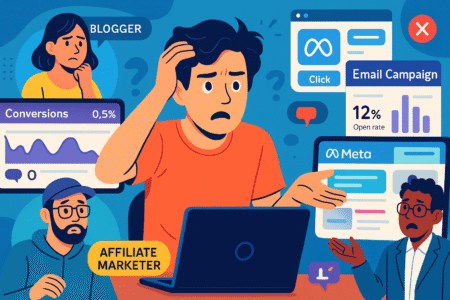
When your lead funnel tries to appeal to everyone, it often ends up resonating with no one.
You need clarity in your messaging. One product. One promise. One person you’re speaking to. That’s the foundation of a lead funnel that works.
Lacking a Clear Ideal Customer Profile (ICP)
If you’re not totally sure who your funnel is designed for, that’s a red flag.
- Are they beginners or experts?
- Are they struggling with time, money, confidence, or something else?
- Where do they hang out online? What do they already believe?
Once you know that, every part of your funnel—from ad copy to landing pages to email subject lines—can speak directly to them.
Using Generic Language That Fails to Connect
Your headlines, opt-in offers, and calls to action should feel like they were written specifically for one person.
Compare these two examples:
- “Download our free guide.”
- “Get the 3-step checklist busy coaches use to book more clients.”
Which one feels more personal? Which one speaks to a real pain point?
When your language reflects your audience’s internal dialogue, conversions improve.
Real Talk: Most funnel copy sounds like it was written by a committee. Don’t be afraid to use simple, direct language that feels human.
3. Offering Weak or Irrelevant Lead Magnets
Your lead magnet is often the first handshake in your funnel. If it’s not compelling, your funnel stalls before it even starts.
It’s not about offering a PDF just for the sake of it—it’s about creating something that actually solves a problem now.
Choosing the Wrong Format for Your Audience
Not every audience wants a long eBook. Some prefer:
- A quick checklist
- A 10-minute video tutorial
- A swipe file or template
- A short email course
Choose based on your audience’s habits and attention span. For example, freelancers might love swipe files they can plug into their workflow, while SaaS buyers might prefer a demo walkthrough.
Solving a Problem They Don’t Care About
A lead magnet that solves a low-priority issue won’t inspire anyone to take action.
Let me break it down for you:
- Low-urgency: “Learn about our process.”
- High-urgency: “Discover why 73% of marketing budgets are wasted—and how to avoid it.”
If your magnet doesn’t feel urgent or useful, you’re wasting a click.
No Clear Next Step
Even great lead magnets can stall if there’s no obvious “what now?”
Always connect your freebie to the next logical offer. For example:
- A webinar leads into a course.
- A checklist leads into a strategy call.
- A quiz leads into a tailored product recommendation.
That connection makes the funnel feel like a natural progression, not a patchwork.
4. Confusing or Cluttered Landing Pages
Once someone hits your landing page, you’ve got a few seconds to keep them there.
A messy, noisy, or unclear page is one of the fastest ways to tank conversions. Your landing page should have one job—get someone to take the next step.
Too Many Choices = No Action
One lead magnet. One button. One promise.
When you offer multiple things—“download this” and “join the list” and “check out our blog”—you overwhelm your visitors.
A high-converting lead funnel removes distractions, not adds them.
Poor Visual Hierarchy and Clutter
If your page looks like a wall of text or has 10 competing colors and fonts, people bounce.
Here’s what to focus on:
- A strong headline with a clear benefit
- A short explanation (2–3 sentences max)
- A clean layout with plenty of white space
- A single, bold call to action button
Use tools like Unbounce, Leadpages, or Carrd if you want clean, simple templates that don’t require design skills.
No Social Proof
Even if your lead magnet is solid, many people want proof before they opt in.
Add:
- Testimonials from real users
- Logos of companies you’ve worked with
- A stat about how many people have downloaded your freebie
Trust nudges conversions upward—without being pushy.
5. Weak Follow-Up Sequences That Lose Leads
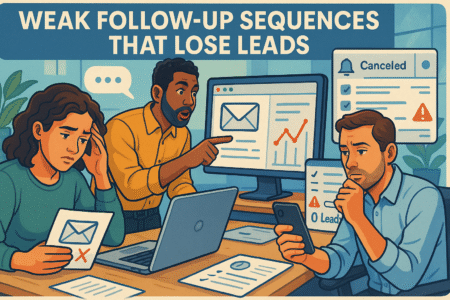
Your funnel doesn’t end after the email address. That’s when the real work begins.
Many funnels fall flat after the opt-in because they rely on one email—or none at all.
Not Sending a Welcome Email Right Away
Timing matters. When someone joins your list, they’re warm. That’s your best moment to build trust.
Your welcome email should:
- Remind them what they signed up for
- Deliver the lead magnet without delay
- Share what to expect next
- Maybe even ask a simple question to start a conversation
The sooner you connect, the more likely they’ll stay engaged.
Generic or Salesy Email Sequences
Don’t just launch into “Buy now” emails. Instead, build a mini journey that nurtures interest.
A 4–5 email sequence might look like:
- Welcome and lead magnet delivery
- Story or lesson related to their pain point
- Case study or result from someone like them
- Invite to a webinar, free call, or product trial
- Light pitch with urgency or limited offer
This structure builds curiosity and connection—without pressure.
No Clear CTA in Each Email
Every email should guide readers to one action. Whether it’s clicking a link, replying to a question, or watching a video—clarity wins.
Keep it simple. If someone reads your email but isn’t sure what to do next, the funnel breaks down.
6. Skipping A/B Testing and Optimization
No lead funnel is perfect the first time. But you’d be surprised how many people set it and forget it.
Tiny tweaks can make a huge difference over time—especially when you know what to test.
Testing the Wrong Elements
Start with high-impact variables:
- Headline and subheadline
- CTA button text and placement
- Form length (fewer fields usually = higher conversions)
- Email subject lines and open rates
There’s no need to change everything at once. Focus on one variable, track the results, and iterate.
Ignoring the Data
Tools like Google Analytics, Hotjar, and ConvertKit give you valuable insights into where your funnel is thriving—or leaking.
- Where are people dropping off?
- Which emails get opened?
- What pages have high bounce rates?
The data doesn’t lie. Use it to tweak copy, layout, or offer timing.
Expert Tip: Schedule a 30-minute funnel review every two weeks. Even small changes can compound into major improvements in ROI.
7. Not Aligning Your Offer With Funnel Expectations
Even if your funnel looks good and runs smoothly, it won’t convert if the offer at the end doesn’t match the journey.
That disconnect breaks trust—and stops sales cold.
The Bait-and-Switch Problem
If your lead magnet promises a free checklist to save time, and your final offer is a high-ticket mastermind, you’ve got a mismatch.
You need a natural lead-in. Something that continues the conversation and deepens the value.
For example:
- A checklist → productivity course
- A free training → strategy call
- A quiz → tailored product bundle
Each step should feel like a logical “next best thing.”
Failing to Build Value Before the Ask
If you go for the sale too soon, people feel pushed. Your offer needs context.
Use your funnel to:
- Educate on the problem
- Show what’s possible
- Prove your authority
- Highlight small wins
That way, when you pitch the offer, it feels like a solution—not a sales pitch.
8. Relying Too Heavily on Automation Without Personalization
Automation can save time, but without a personal touch, your lead funnel can feel robotic and disconnected.
A lead funnel is meant to build relationships—not just push people through a series of pre-written steps. When you over-automate, you risk turning potential customers into numbers rather than individuals with unique needs.
One-Size-Fits-All Emails Miss the Mark
You’ve probably seen it before: a beautifully designed email that says all the right marketing buzzwords… but it feels like it could’ve been sent to anyone.
Here’s the issue:
- People want to feel seen, not processed.
- Automated emails without personalization get ignored—or worse, marked as spam.
- Using only names in the subject line isn’t real personalization.
Try segmenting your audience based on how they found you, what they downloaded, or what actions they’ve taken. Then write to those groups as if you’re speaking directly to them.
Overusing Triggers Without Strategy
Yes, you can set up 12-step sequences that trigger based on clicks, time delays, and browsing behavior—but should you?
Without a clear strategy, automation becomes noise. For example:
- Triggering too many emails too quickly leads to unsubscribes.
- Sending upsell offers before someone even consumes your lead magnet confuses them.
- Following up too late makes you forgettable.
Let me suggest this: use automation to deliver relevance, not just activity. Every email or action should be grounded in what your lead actually needs next.
Neglecting Human Touchpoints
Sometimes, a personal note goes further than an automated message ever could.
- A short voice message on LinkedIn
- A personalized email after a webinar
- A reply to someone’s response in your funnel
These small moments build trust and differentiate you from competitors who rely solely on automated systems.
Real Example: A freelance designer I know sends a 30-second video introduction when someone books a discovery call. It’s short, informal, and personal—and his conversion rate nearly doubled just from that change.
Automation should support your funnel, not replace the human experience. If you’re wondering why your lead funnel feels cold or disconnected, this might be the missing piece.
Pro Tip: Review your funnel and ask, “Where can I show up as a real person here?” Then add just one touchpoint that feels more personal and less automated.
9. Ignoring Mobile Optimization Across the Lead Funnel
If your lead funnel isn’t mobile-friendly, you’re losing leads—plain and simple.
More than half of web traffic now comes from mobile devices. And yet, many funnels still look clunky or slow on smaller screens. A slow-loading form, hard-to-click button, or unreadable email can completely derail a potential conversion.
Clunky Mobile Landing Pages
Landing pages that aren’t optimized for mobile tend to suffer from:
- Text that’s too small to read
- Buttons that are hard to tap
- Forms that require pinching and zooming
Even a few seconds of frustration can send people running. Use tools like Google’s Mobile-Friendly Test to see how your pages perform. If your opt-in form looks fine on desktop but turns into a disaster on an iPhone, that’s a fix worth making.
Tip: Design mobile-first. Prioritize simplicity, large buttons, and fast load times.
Emails That Break on Small Screens
If your emails aren’t formatted for mobile, open rates won’t matter—because no one’s reading past the headline.
Here’s what mobile-optimized emails should include:
- Short subject lines that fit narrow screens
- Scannable content with clear sections
- A single call to action that’s easy to tap
- No wide images or bulky layouts that distort
If you’re using an email platform like Moosend or Omnisend, test each email on both mobile and desktop before sending. Most of these tools offer built-in previews or testing environments to help you catch issues early.
Slow Load Times Kill Conversions
A delay of just a few seconds can drastically lower your funnel’s performance. According to Google, 53% of mobile users will leave a page that takes longer than 3 seconds to load.
You can improve load time by:
- Compressing images
- Using clean, minimal designs
- Hosting your funnel on fast, reliable platforms
Even if your funnel looks beautiful, it won’t convert if people abandon it before it loads.
Quick Fix: Use free tools like PageSpeed Insights or GTmetrix to run a speed test and identify problem areas.
Pop-Ups That Don’t Work on Mobile
Pop-ups can be effective, but on mobile they often become annoying or impossible to close.
If your lead capture form is hidden behind a hard-to-exit pop-up or covers key content, Google might even penalize your page in search rankings.
Instead, use:
- Slide-in forms
- Sticky bars at the top or bottom
- Embedded forms within content
These options provide a better user experience—without frustrating your visitors.
Expert Tip: Go through your entire funnel on your phone, step-by-step. Opt in, read the emails, try the forms. You’ll instantly spot where the friction lives.
Optimizing for mobile isn’t optional anymore—it’s foundational. If your lead funnel doesn’t work smoothly on mobile, it’s not ready for the real world.
Key Takeaways for Fixing Lead Funnel Mistakes
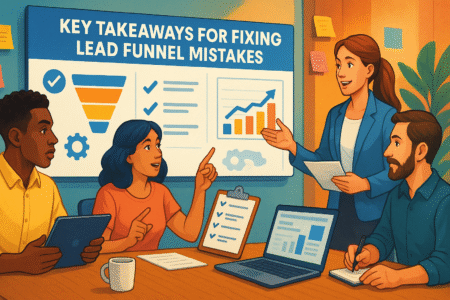
Fixing your lead funnel doesn’t always mean rebuilding it from scratch. Most of the time, it just needs a few thoughtful tweaks to clear up confusion, build trust, and improve flow.
Let’s simplify the big lessons from everything we’ve covered so far.
Clarify Your Funnel’s Purpose and Target Audience
Start by asking yourself: what exactly do you want your lead funnel to achieve—and for whom?
- Define one specific goal: grow your email list, book discovery calls, sell a product, etc.
- Build every step around that outcome, with no distractions.
- Speak to one ideal customer. Not “anyone interested in marketing,” but “freelance designers who want to scale.”
When you stop trying to be everything to everyone, your funnel becomes a lot more effective.
Choose Lead Magnets That Solve Immediate Problems
A lead magnet should make your audience say, “Wow, I needed this.”
- Pick a format your audience actually consumes—checklists, templates, mini-courses.
- Solve a small but real problem that creates momentum toward your paid offer.
- Connect your lead magnet naturally to the next step in your funnel.
The better your lead magnet fits your audience’s current need, the more likely they are to take action.
Keep Landing Pages Simple, Focused, and Mobile-Friendly
A cluttered landing page creates confusion and kills conversions. Keep it clean and direct:
- One strong headline that clearly states the benefit
- A simple explanation—what they get and why it matters
- A clear CTA button that’s easy to tap on mobile
- No extra links, no distractions, no mixed messages
Think of your landing page as a conversation. You’re not selling yet—you’re inviting.
Nurture With Human, Purposeful Emails
Don’t let your funnel stop after the opt-in. This is where the relationship really begins.
- Send a welcome email right away, and make it personal.
- Create a short email sequence that educates, tells stories, builds trust.
- Make sure every email has one clear action you want them to take.
A good funnel feels like a guided tour, not a sales trap. When your emails sound like a real person wrote them, people respond.
Test Often and Make Small, Smart Changes
Your funnel isn’t a one-time project—it’s a living system.
- A/B test headlines, CTAs, subject lines, and form fields
- Use heatmaps, click data, and email open rates to spot drop-offs
- Track conversions, not just clicks—ROI is the real metric
You don’t need to overhaul everything. Focus on one small improvement at a time. Over weeks and months, those tweaks add up.
Make Sure Your Final Offer Matches the Journey
The end of your funnel should feel like the natural next step—not a surprise twist.
- Match your final offer to the promise of your lead magnet
- Build up value before you make a pitch
- Position your product or service as the obvious solution to the problem they’ve been trying to solve
If your funnel tells one consistent, helpful story from start to finish, your leads are far more likely to say yes.
Final Thought: Lead Funnels Are About Trust, Not Tricks
At the end of the day, your lead funnel is about helping people.
The more your funnel reflects genuine empathy, clear solutions, and a helpful tone, the better your ROI will be. It’s not about squeezing leads—it’s about earning their trust one step at a time.
Tip for Action: Take one section of your funnel today—just one—and walk through it like a lead would. Where does it feel bumpy, confusing, or impersonal? Fix that. Then move on to the next. That’s how great funnels get built.

